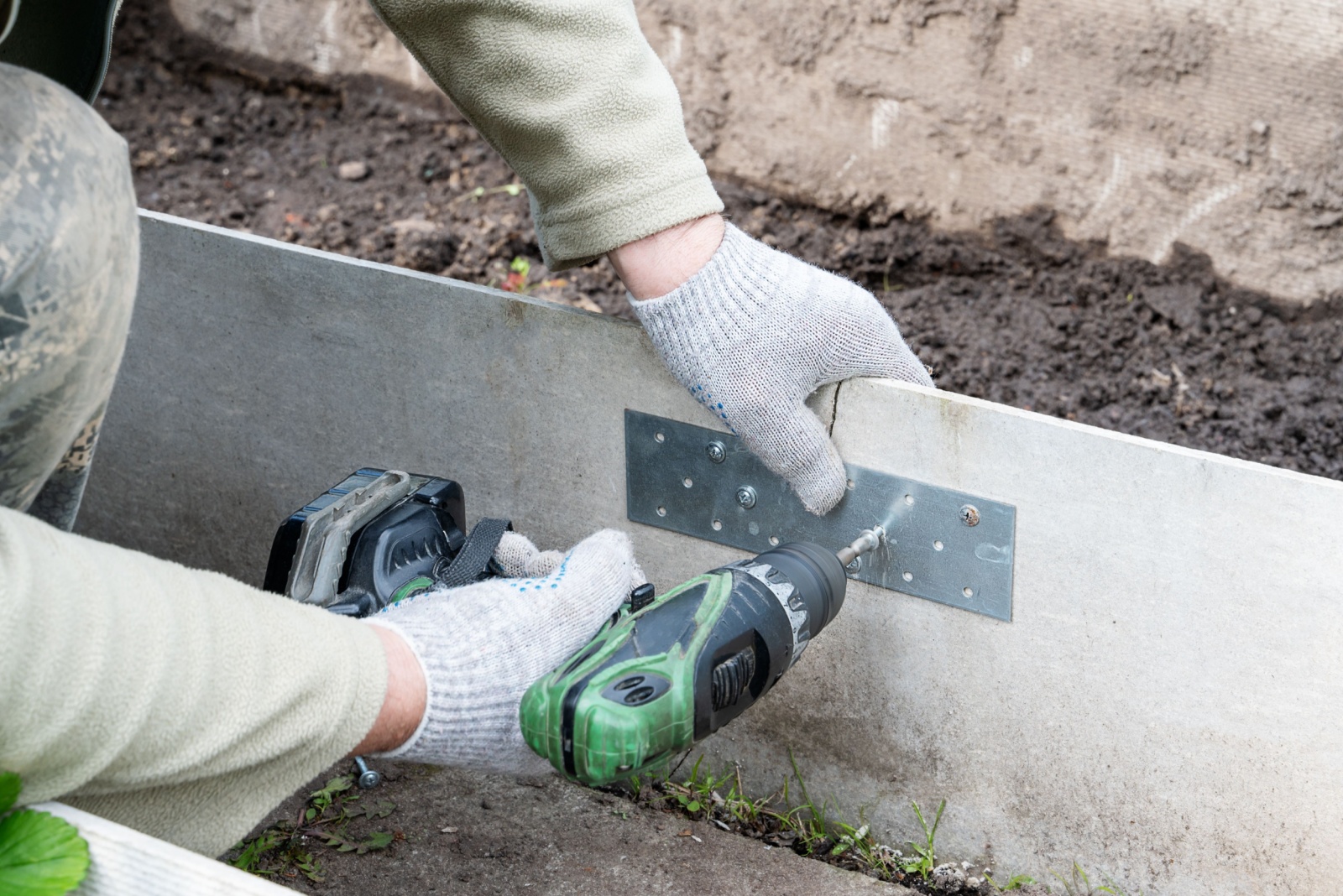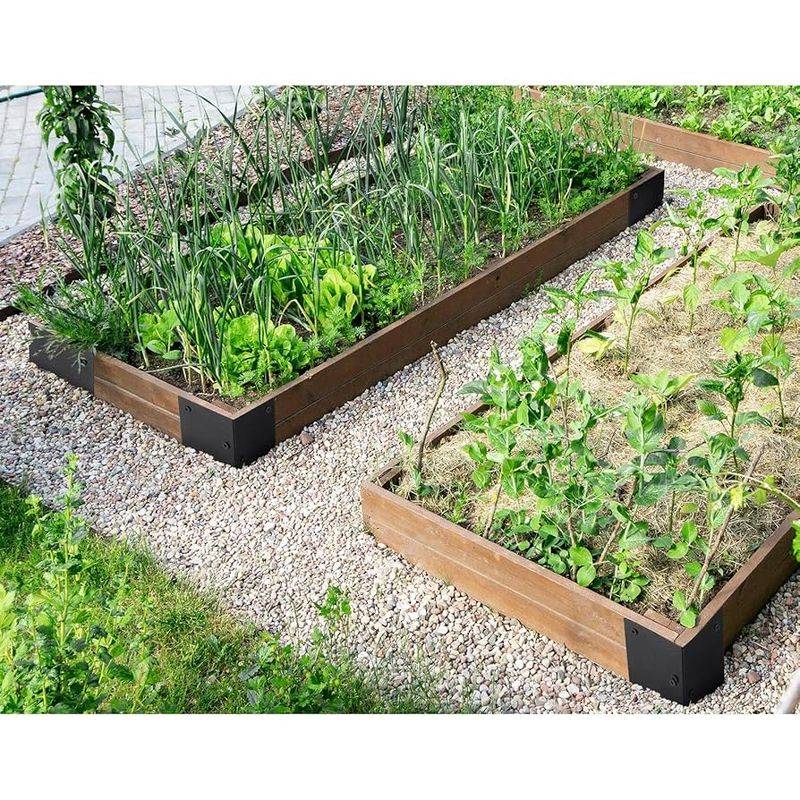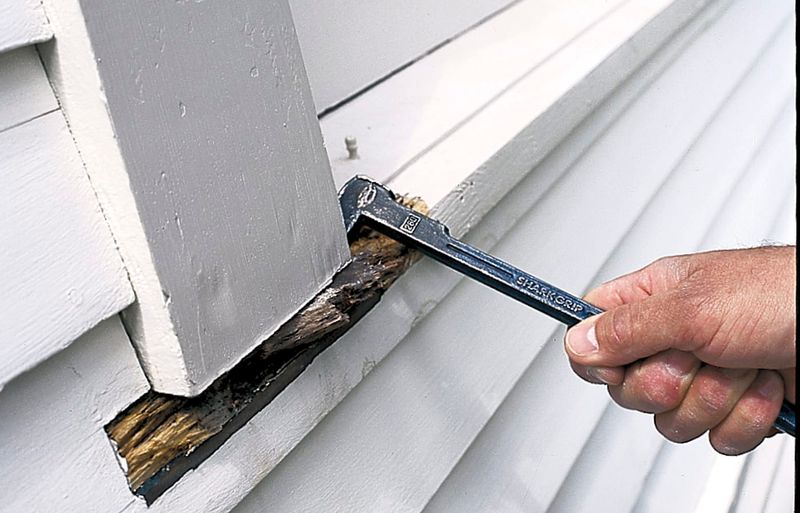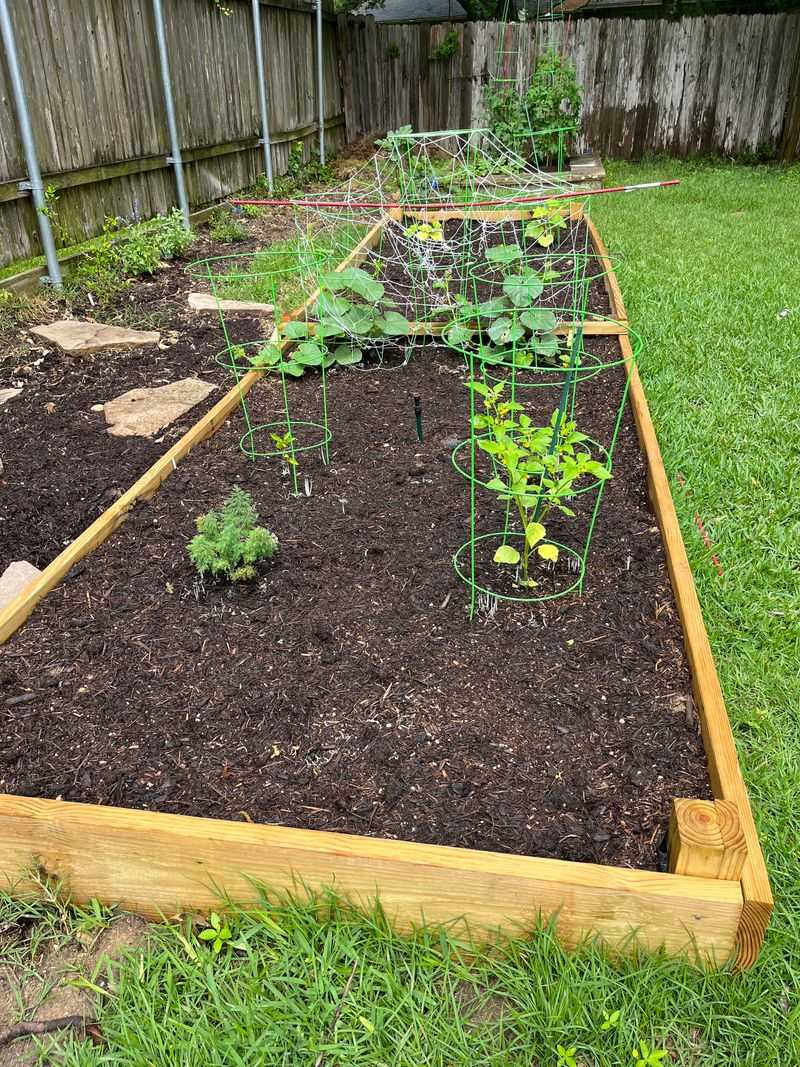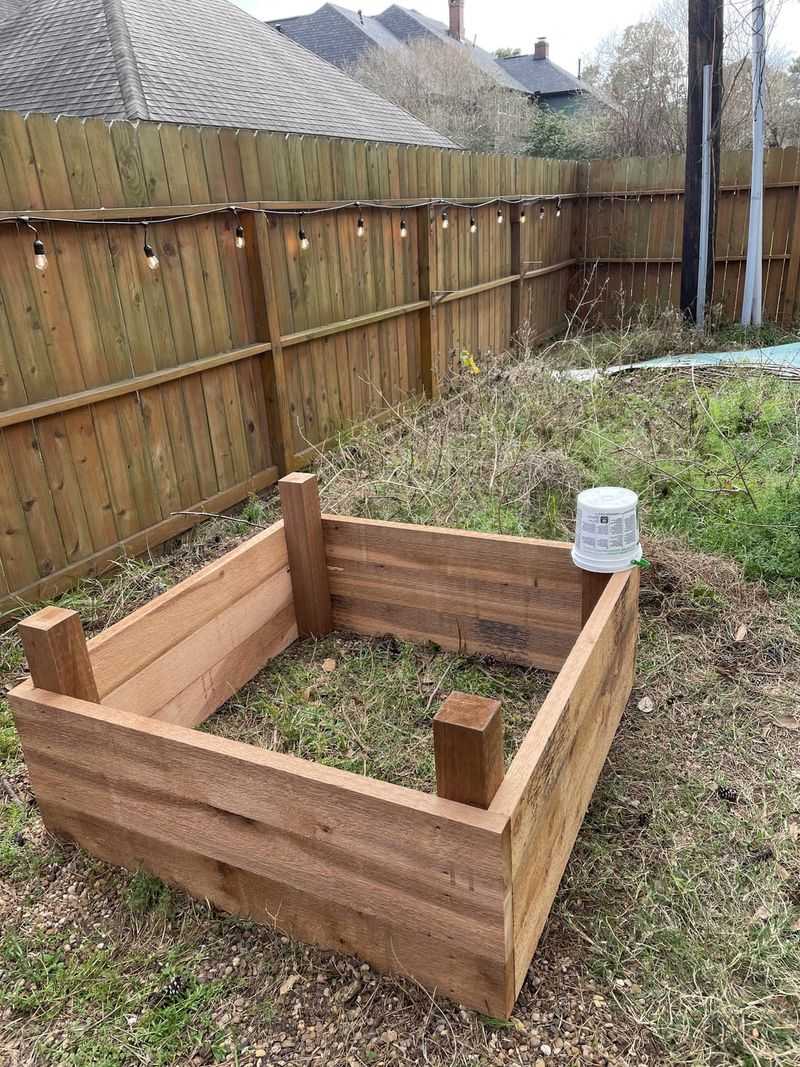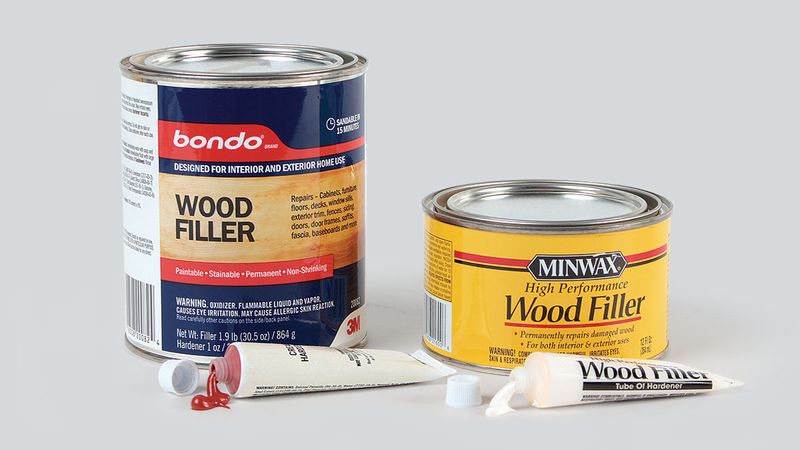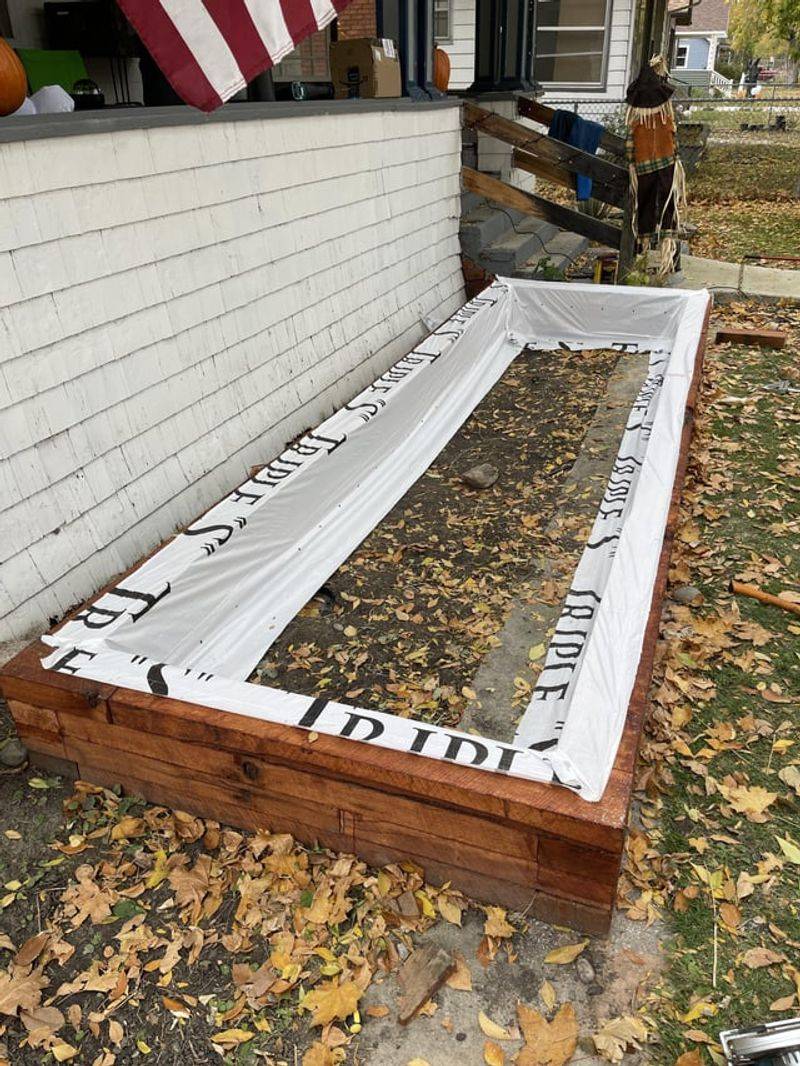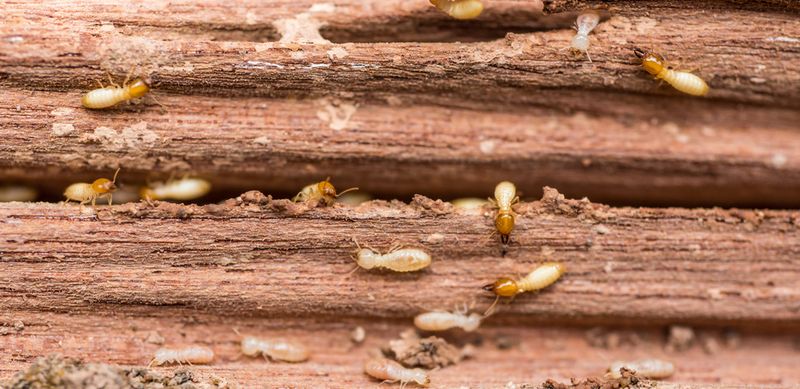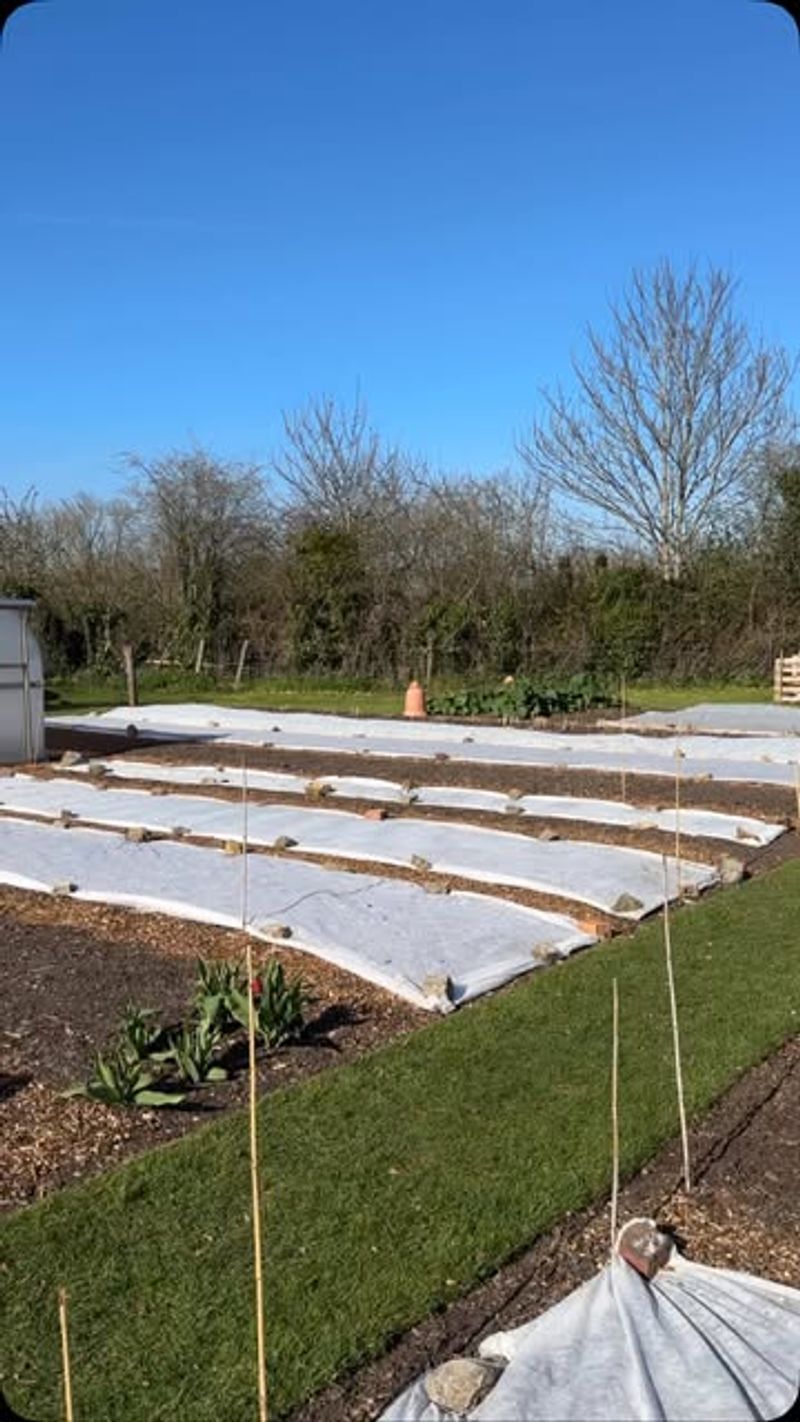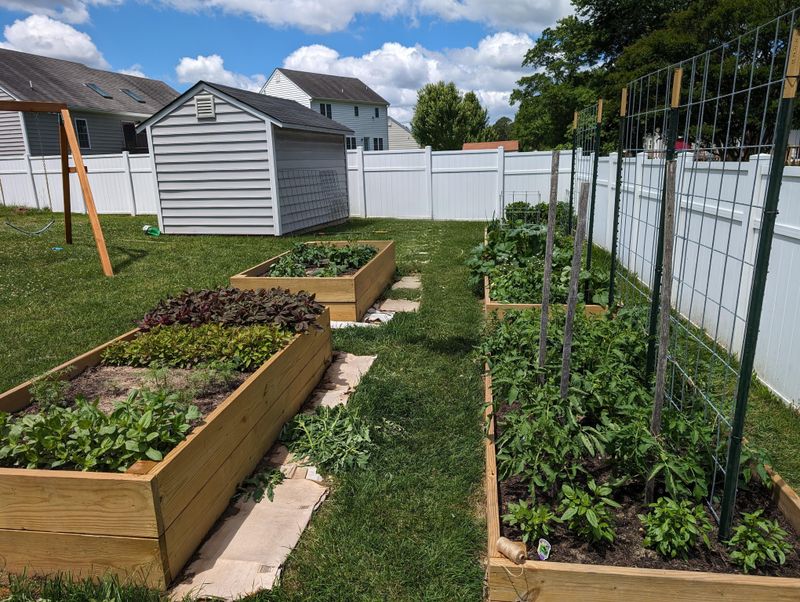Gardening in Texas means dealing with intense heat, dry spells, and soil that wears down wood faster than you’d expect. Raised beds take a beating in these conditions. Without regular upkeep, even the toughest materials start to break down.
Over time, boards warp, screws loosen, and corners split—especially after heavy rains or long droughts. It’s not just about looks; weakened beds can affect drainage and plant health. A little maintenance goes a long way.
Reinforcing your beds protects the rich soil and thriving plants inside. It’s an investment in both structure and success. With a few smart repairs, your garden can stand strong through every Texas season.
1. Reinforce Weak Corners With Metal Brackets
The corners of raised beds take the most strain from soil pressure and are typically the first points to fail. Adding galvanized metal corner brackets provides critical structural support where it’s needed most.
After installing my first raised bed in Dallas, I noticed the corners started separating after just one summer. Installing L-brackets extended the bed’s life by at least 3 years. For maximum durability, use screws rather than nails when attaching brackets.
2. Replace Rotten Boards Before Damage Spreads
Don’t wait until your entire bed collapses! When you spot signs of rot on a board – soft spots, discoloration, or visible fungus – remove and replace it immediately before the damage affects adjacent pieces.
Texas humidity creates perfect conditions for wood rot to spread rapidly. I’ve saved several beds by swapping out single compromised boards during spring maintenance. Choose rot-resistant woods like cedar or cypress that stand up to our climate for 7-10 years.
3. Seal Wood With Weather-Resistant Treatment
Raw untreated wood deteriorates quickly in Texas weather. Applying a food-safe sealant creates a moisture barrier that dramatically extends your bed’s lifespan and prevents warping from our extreme temperature fluctuations.
My raised beds in Austin lasted twice as long after I started sealing them with linseed oil every spring. Remember that standard pressure-treated lumber contains chemicals unsafe for food gardens. Instead, use natural sealants like tung oil or beeswax that need reapplication every 12-18 months.
4. Why Lining Your Bed Prevents Moisture Damage
Placing a protective barrier between soil and wood dramatically extends bed longevity. Landscape fabric or plastic sheeting creates separation that keeps moisture from constantly contacting wooden sides.
When rebuilding my raised beds in San Antonio, I discovered the unlined sections had deteriorated twice as fast as lined areas. The difference was striking! Extend your liner about 2 inches above soil level and secure it with staples every 6-8 inches for best results.
5. Fill Cracks With Exterior Wood Filler
Small cracks in your raised bed boards might seem minor but they invite moisture, insects, and accelerated decay. Catching and filling these openings early prevents major structural problems down the road.
After two brutal summers in Houston, hairline cracks appeared in my cedar beds. Using exterior-grade wood filler stopped water penetration and prevented further splitting. Choose a filler specifically designed for outdoor use and apply during dry weather when temperatures are between 50-85°F for proper curing.
6. Upgrade Fasteners To Resist Corrosion
Standard screws and nails rust quickly in Texas soil conditions, weakening your bed’s structure. Replacing them with galvanized, stainless steel, or ceramic-coated fasteners prevents premature failure.
The beds I built in El Paso developed wobbly corners after just one season due to corroded screws. Swapping in stainless steel deck screws completely solved the problem. For extra reinforcement, use slightly thicker and longer fasteners than the originals – I recommend 3-inch screws for standard 2-inch lumber.
7. Create Proper Drainage To Prevent Wood Rot
Standing water accelerates wood deterioration faster than almost anything else in Texas gardens. Improving drainage both inside and around your raised beds significantly extends their useful life.
My beds in Corpus Christi suffered badly until I added a 2-inch drainage layer of coarse gravel at the bottom. For beds directly on ground, elevating them slightly with bricks at each corner allows air circulation and prevents constant ground contact that leads to rot.
8. Add Middle Support Braces For Longer Beds
Raised beds longer than 6 feet tend to bow outward from soil pressure. Installing cross-braces or middle supports prevents this structural failure and extends your bed’s lifespan considerably.
My 8-foot beds in the Texas Hill Country started bulging after our first heavy rain. Adding three evenly-spaced cross-braces completely solved the problem. For beds taller than 12 inches, install supports at both the top and middle height for maximum reinforcement against our clay-heavy Texas soils.
9. Protect From Termites With Natural Deterrents
Termites love Texas’s warm climate and can destroy wooden beds within months. Creating barriers and using natural repellents significantly reduces this threat without introducing harmful chemicals near your food crops.
After losing a bed to termites near my Galveston property, I started using cedar oil spray on all my new beds. Diatomaceous earth applied around the bed perimeter creates an additional protective barrier. For extra protection, place beds at least 6 inches away from fences or structures where termites might already be established.
10. Refresh The Soil Structure To Reduce Pressure
Heavy, compacted soil puts excessive pressure on bed walls, especially after Texas downpours. Maintaining proper soil structure reduces this strain while improving growing conditions for your plants.
When rebuilding my beds in Amarillo, I switched to a lighter soil mix with expanded shale that weighs less and drains better. Adding 2-3 inches of compost yearly not only feeds plants but maintains soil structure. Consider installing a drip irrigation system to maintain consistent moisture levels and prevent the extreme wet-dry cycles that stress wood.
11. Cover Beds During Extreme Weather
Texas weather extremes—from scorching sun to freeze events—accelerate wood deterioration. Using protective covers during these periods extends bed life considerably by reducing temperature fluctuations and moisture damage.
My raised beds in Lubbock lasted nearly twice as long after I started covering them during winter freezes and summer heat waves. Simple tarps secured with bungee cords work well for temporary protection. For more permanent solutions, consider shade cloth that blocks 30-40% of sunlight during our brutal summer months.
12. Schedule Seasonal Maintenance Checks
Regular inspection prevents small issues from becoming catastrophic failures. Creating a seasonal maintenance routine specifically adapted to Texas growing conditions helps catch problems early.
After losing several beds to neglect, I now check mine thoroughly each season. Spring inspections focus on winter damage and loose fasteners. Fall checks address summer heat impacts and soil settling. I keep a simple maintenance log with dates and repairs that helps track recurring issues with my Fort Worth garden beds.

